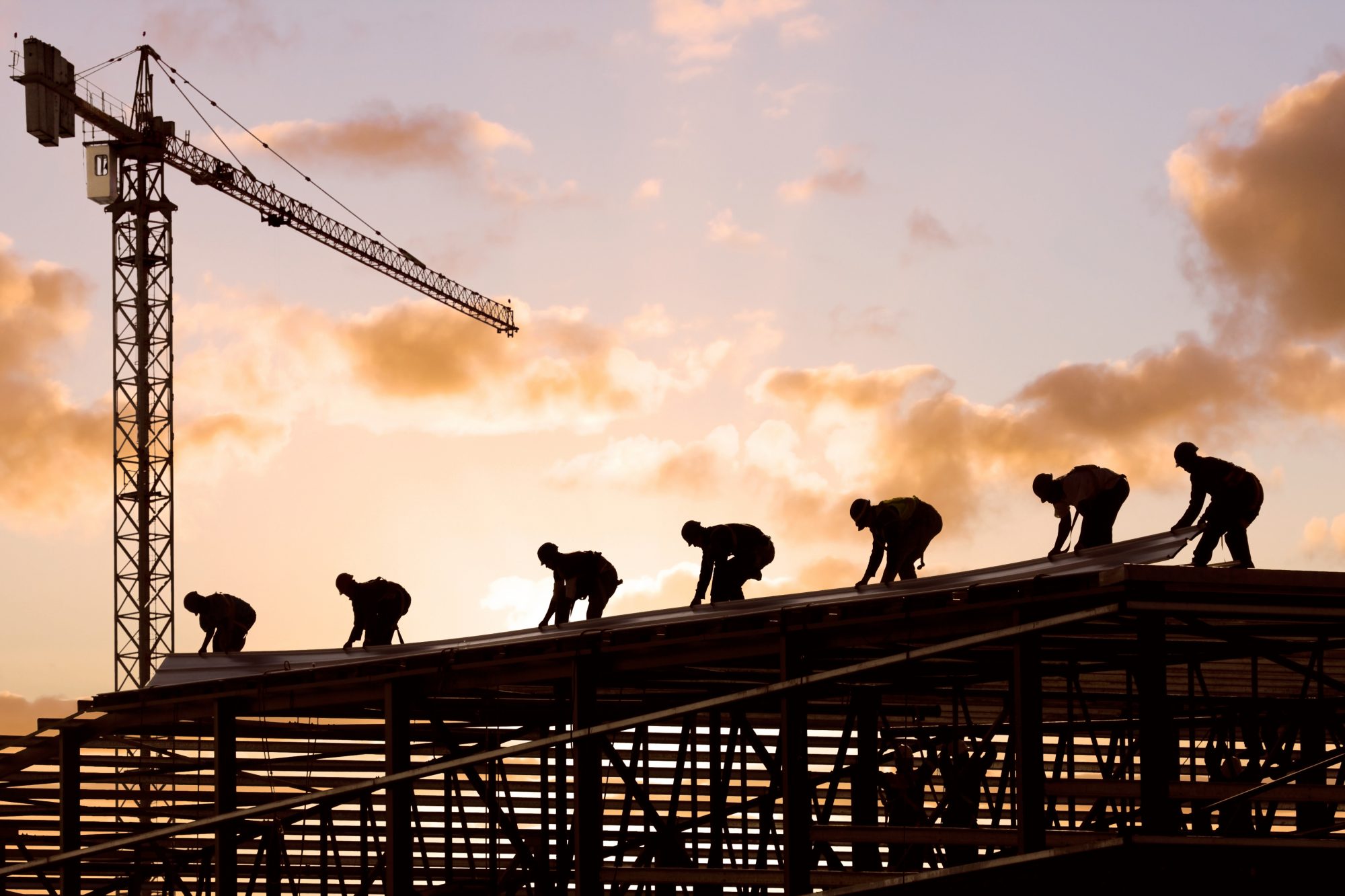December construction output increased by 2.0%, marking the second month of consecutive growth since March 2021, with the new housing sector seeing the strongest growth since records began in 2014
Evidence from both returns received for the Monthly Business Survey for Construction and Allied Trades and the Business Insights and Conditions Survey (BICS) suggested some of the issues in sourcing construction products in the second half of 2021 had continued to ease.
Infrastructure new work and private new housing were the sectors which contributed the most to the monthly increase in December, growing by 8.5% and 3.1% respectively.
Notable increases were also seen in the smaller sectors of private industrial and public new housing, which grew by 9.1% and 7.4%.
Evidence suggests that the increase in private new housing is because of businesses pushing more work through than a usual December as a result of it being their year-end. The easing of sourcing certain construction products in December 2021 compared with previous months is also likely to have helped house builders’ output.
Alongside this, there is also the suggestion that the December increase came from a rise in warehouses and distribution centres.
This is further illustrated in the new orders data with warehouses in private industrial seeing annual growth of 144.6% in 2021, likely to be linked to a change in consumers’ shopping habits during the pandemic.
Yearly construction output changes
Total construction output increased 12.7% in 2021 compared with 2020. This is the largest increase since annual records began in 1997 surpassing the previous record of 9.9% in 2014. It follows a record fall of 14.9% in 2020, largely because of the pandemic.
The annual increase in 2021 was because of rises in both new work, and repair and maintenance.
At a sector level, eight of the nine sectors saw an increase in annual growth in 2021. Record annual growth increases were seen in infrastructure (30.4%), private housing repair and maintenance (20.2%) and non-housing repair and maintenance (14.1%).
Projects such as High Speed 2, motorway improvements, and green energy developments were the likely cause of this.
Private commercial decline in December
Private commercial was the only type of work to see an annual decline in 2021. This fall is on the back of a record decline in 2020 and is the fourth successive decline in annual growth for private commercial new work.
Evidence from some businesses suggests that they have put investment decisions on hold over the last few years because of economic uncertainty.
New orders
Total construction new orders increased by 9.2% (£1.1m) in Q4 2021, compared with Q3 2021.
New orders are now higher than before the pandemic. Compared with Q4 2019, which was the last full quarter not affected by the pandemic, and not seeing a noticeable short-term spike, total construction new orders are now 16.6% (£1.8m) higher, with all six sectors having recovered to above their pre-pandemic level in Q4 2021.
All other new work increased 15% in Q4 2021. An increase was seen across all non-housing sectors, most notably in both infrastructure 23.1% (£386 million) and private industrial 21.8% (£349 million) new orders. Housing new orders saw a quarterly fall of 2.4% in Quarter 4 2021 driven by public housing which fell 19.1% (£81 million).
Factories and warehouses both contributed to the increase in Q4, which is likely to represent the continued need for storage space as consumers’ requirements have adapted during the pandemic, such as online retail.
The increase in infrastructure new orders was led by orders for both rail and harbour projects. New orders in rail projects saw its largest quarterly growth since Q3 2019 and harbour projects saw its highest value since records began, driven by a one-off project in the northeast.
New work
The Construction OPI for new construction work grew 6.6% in the year to December 2021.
The new work sector with the strongest annual growth rate of prices was new housing, which rose 9.9%. This is the strongest rate of growth for new housing output prices since records began in January 2014.
Repair and maintenance
The Construction OPI for all repair and maintenance grew 5.3% in the year to December 2021. This is the strongest rate of growth for repair and maintenance output prices since records began in 2014.
The repair and maintenance sector with the strongest annual growth rate of prices was non-housing repair and maintenance, which rose by 5.4%.
Industry comment
Clive Docwra, managing director of property and construction consultancy McBains, said: “After last month’s figures showed a welcome increase in output following the easing of supply chain bottlenecks, today’s figures will be a further tonic to the industry, especially because the impact of Omicron was expected to have disrupted work.
“Particularly encouraging is that [December construction] output was above pre-pandemic levels, and although new work remains below that of February 2020, this is likely to represent a seasonal pause in work rather than a reluctance by investors to commit to new projects.
“With total construction output increasing 12.7% in 2021, the largest increase since annual records began in 1997, it looks like construction is bouncing back from the pandemic.
“However, it’s too soon to start hailing this as a long-term recovery, especially as the industry expects soaring electricity and gas prices will bite harder in the coming months as building products manufacturers pass on the costs of making bricks, steel, concrete and cement to construction firms.”
‘Firmly on the path to recovery’
Fraser Johns, finance director at Beard also commented: “The increase in construction output in December was driven by new work. With clients green-lighting projects in greater numbers, this suggests confidence is growing, and the start of 2022 looks bright.
“When looking at 2021 as a whole, output increased by a record 12.7% compared to 2020. Output has now hit pre-pandemic levels, and although it has been a long and winding road, it appears we are firmly on the path to recovery.
“The construction sector has shown its resilience in 2021 and a key enabler of this is stakeholder relationships. At Beard we develop our relationships with suppliers and sub-contractors with regular meetings. And these meetings, coupled with our prompt payment policies have ensured we have been able to overcome any hurdles.
“Communication was also crucial in weathering the storms of 2021. Both interacting with employees, suppliers and sub-contractors was essential to keeping projects on track.”














